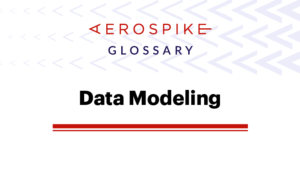 What is data modeling?
What is data modeling?
Data modeling is the process of creating a visual representation of the data that comprises an information system or parts of it. This is done to communicate the connections between data points and structures to developers or application architects. The aim is to show the types of data that are used and stored in the system and the relationships between them. It also represents how that data can be grouped and organized as well as their formats and attributes.
Since business needs drive the data modeling, the required rules and requirements can be built into the system. Data modeling is similar to a roadmap in that it aids in understanding where an organization is going and how it will get there. There is a standard schema and formal technique that define the data modeling process so that there is a common, consistent and predictable way of handling resources.